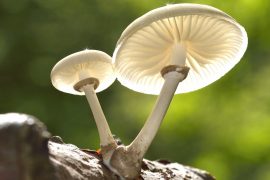
How Antarctica's only native insect defies the cold
When you think of the species that call Antarctica home, you probably picture penguins waddling on the ice or seals lounging by the shore. Yet, amid this icy expanse, there’s a lesser-known creature that is the only insect native to this region: the Antarctic midge.
Unlike larger Antarctic inhabitants, this tiny wingless fly doesn’t rely on fur, feathers, or blubber to survive. Instead, the midge has evolved a suite of biological mechanisms to withstand the extreme conditions of Antarctica.
In fact, understanding its survival strategy could provide valuable insights for human applications, such as cryopreservation.
For years, many aspects of the Antarctic midge’s life remained a mystery. But now, thanks to meticulous research, scientists have unveiled the secrets of its unique two-year life cycle. The findings shed light on how this tiny insect thrives in one of Earth’s harshest environments.
Mysterious life cycle of Antarctica’s insect
The study, led by Professor Satoshi Goto from Osaka Metropolitan University, provides the first comprehensive look at the Antarctic midge’s two-year life cycle. It is shaped by two distinct dormancy phases: quiescence and obligate diapause.
Through observations over six years of rearing midge larvae, the researchers have revealed how this insect times its development to maximize survival in the unforgiving Antarctic climate.
To understand how the midge endures frigid winters in Antarctica, the experts examined its two critical dormancy strategies: quiescence and obligate diapause.
Two states of dormancy
Quiescence is a temporary state of dormancy triggered by unfavorable conditions. When faced with extreme cold, the midge larvae pause their development but resume growth as soon as the environment becomes more hospitable.
In contrast, obligate diapause is a more complex, pre-programmed dormancy that occurs at a fixed point in the insect’s life cycle, regardless of the immediate environmental conditions.
This strategy, which is relatively rare, is typically observed in insects from temperate climates and allows the midge to precisely time its development.
The researchers found that by the first winter, the larvae mature to their second instar stage and enter quiescence, waiting for warmer conditions before resuming development.
By the second winter, however, the insects reach their final larval stage but do not pupate. Instead, they enter obligate diapause, delaying their transition to adulthood until the following summer.
This built-in delay ensures that when summer finally arrives, all individuals emerge as adults simultaneously, optimizing their chances of finding mates during their short-lived adult phase.
Race against time
As the Antarctic summer approaches, the long-awaited transformation begins. With rising temperatures, obligate diapause ends, allowing the larvae to synchronize their pupation and emerge as adults.
But adulthood for the Antarctic midge is fleeting – these insects live for just a few days, during which they must quickly find a mate and reproduce before the harsh environment takes its toll. This perfectly timed reproductive strategy is crucial for the species’ survival in such an extreme habitat.
“We determined that for the Antarctic midge obligate diapause ends with the onset of low temperatures in winter so that the larvae all pupate at the same time and emerge as adults at the same time,” said Professor Goto.
“Although seasonal adaptation strategies involving overwintering multiple times using both quiescence and obligate diapause have not been reported in other organisms, we believe that insects inhabiting harsh environments such as the Arctic and high altitudes might be employing similar strategies.”
Interestingly, the researchers speculate that similar survival strategies may exist in insects from other extreme environments, such as the Arctic or high-altitude regions.
Life in extreme conditions
The Antarctic midge’s extraordinary ability to survive multiple winters through both quiescence and obligate diapause is a testament to nature’s ingenuity.
“This adaptability is a testament to the resilience of this species in the face of extreme challenges,” wrote the study authors.
“Although its stress tolerance has been extensively studied, the physiological mechanisms by which this species enters winter dormancy and synchronizes its life cycle with Antarctic seasons have received less attention.”
Lessons from Antarctica’s insects
The research exceeds just a simple understanding of Antarctica’s ecosystem. The midge’s resilience can teach scientists in the fields of cryopreservation, climate adaptation or even space exploration.
If nature has already found a solution to endure the unrelenting cycles of thawing and freezing, it could be possible for similar biological mechanisms to be applied to humans.
These findings may inspire future advancements in fields like biological preservation and climate adaptation research.
While penguins may steal the spotlight, the humble Antarctic midge proves that even the smallest creatures can have remarkable survival stories worth telling.
The full study was published in the journal Scientific Reports.
Image Credit: Yuta Shimizu / Osaka Metropolitan University
—–
Like what you read? Subscribe to our newsletter for engaging articles, exclusive content, and the latest updates.
Check us out on EarthSnap, a free app brought to you by Eric Ralls and Earth.com.
—–













